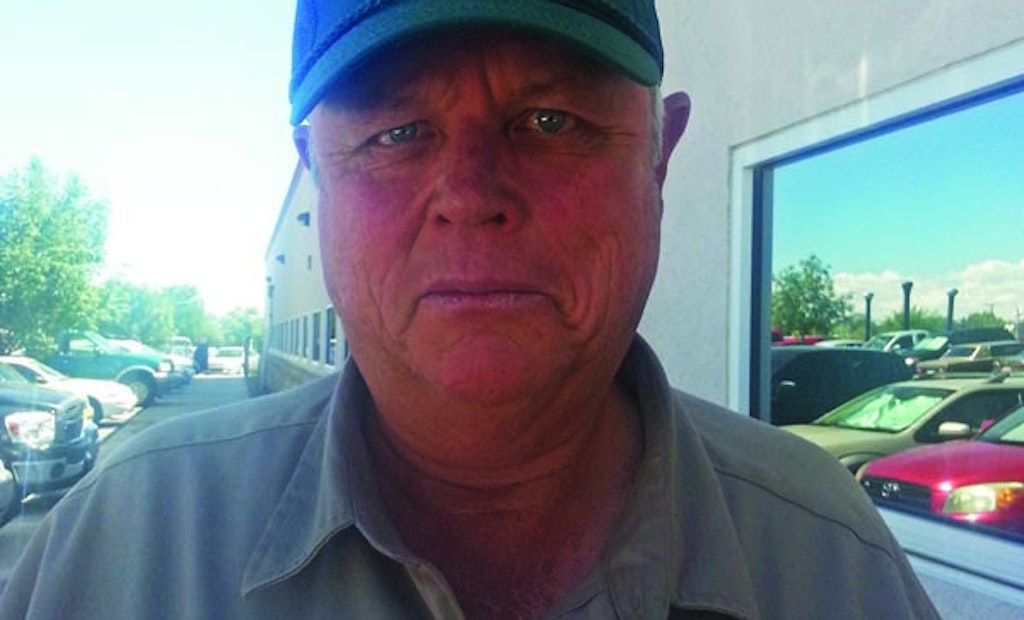
Interested in Education/Training?
Get Education/Training articles, news and videos right in your inbox! Sign up now.
Education/Training + Get AlertsNew Mexico is one of the few states with two trade organizations representing the onsite wastewater industry. The Professional Onsite Wastewater Reuse Association of New Mexico (POWRANM) is a statewide group, while the New Mexico Onsite Wastewater Association (NMOWA) represents members mainly in the southern part of the state.
NMOWA began in 2010 and has about 10 members along with about 175 people on its distribution list, according to past president and current secretary/treasurer Jace Ensor. POWRANM was formed in 2004 and has about 30 members. “When we go to the Legislature or to public meetings on rule changes, they like to see an organization rather than individuals,” says Gene Bassett, CEO and a founding member. “That’s why we formed the group.”
Doing so helped achieve several rules changes, including a requirement for transfer of property inspections that started in 2005. That and several other rules were written by Bassett, owner of E.C. Bassett Construction.
“The industry benefited to the tune of probably $50 million to $70 million in nine years because of the inspections, more pumping, system replacements and modifications, and finding troubled systems,” says POWRANM President Ralph Baker Dotson.
Ensor, who owns Mountain Top Inc., adds that the inspection requirement has helped homeowners as well. “Purchasers who have never owned a septic system benefit by knowing their system is functioning reasonably well,” he says. “Knowing what is going to happen at closing eliminates some painful surprises.”
BETTER MAINTENANCE
Ensor would like to see more promotion of proper maintenance. “I despise having to tell a homeowner that if they would have pumped their system five years ago, they wouldn’t be spending up to $10,000 now. I ask what it would have taken to convince them to maintain their system. I’ve never gotten an answer. Operators of onsite systems need to understand that while not a lot of maintenance is required, some is critical.”
Municipal sewer in Ruidoso, where Ensor lives, costs $53.50 per month inside the city limits. “My office just outside the city limits, but on municipal sewer, has to pay double - $107 per month. An aerobic system typically costs $1,000 a year to maintain including periodic pumping. It seems the ones that scream the most are those with older conventional systems that refuse to pay $500 for pumping every three to five years.”
At the suggestion of the industry groups, New Mexico recently added requirements for risers on tanks, effluent filters, and new standards for gravel systems. Work is underway on other changes. “Onsite systems need better grease traps and a better way to size them,” says Bassett. “There are more restaurants and service stations off the sewer grid so we have to come up with a good formula.”
A UNIFIED FRONT
Such regulatory changes are now a coordinated effort between the industry and regulators. It’s a sign of healing some longstanding relationship problems. For instance, certified installers are required to get 16 continuing education units every three years, but certification that used to be mandatory is now voluntary. “There was a fight between our association and the New Mexico Environment Department [NMED] and they got it removed from the regulation,” according to Dotson, owner of AAA Allied Septic Service.
Bassett says NMED didn’t take kindly to the onsite professionals joining forces in 2004. It didn’t help that POWRANM went around NMED to get regulations changed. “Anybody can petition the Environmental Improvement Board to change regulations, which is what we did.”
Bassett helped develop those regulations, including such things as tank sizing standards, low-pressure pipe regulations and the section of the law dealing with the installer certification. “NMED contested many of the changes but the board ruled for us. That’s when the rift started.”
Cracks were also developing within the onsite group, which led to Ensor and others forming NMOWA. Dotson says POWRANM takes responsibility for that. “I don’t think we focused as much on our membership as we should have. There was probably a need that POWRANM was not fulfilling.”
BRIGHT FUTURE
While the rule changes shepherded by POWRANM were a positive, Dotson says the group lost sight of other important issues like listening to and serving members. “We have more members today than last year and we’re paying a lot of attention to them. You have to take care of your members and it’s also important to get members involved.”
The relationship between the two groups has become much more positive. “We collaborate a lot more,” says Dotson. “We’ve mended a lot of fences and are bringing the industry much closer together. We learned from our mistakes. We’ve been candid with each other and I’ve apologized for the things we did. We’re really working on it.”
The two groups now communicate regularly, attend each other’s conferences where they can get continuing education credits, share ideas and work together in the planning and coordination of training. As a board member of the National Onsite Wastewater Recycling Association and vice president of the National Association of Wastewater Technicians, Bassett helps customize their training resources to meet the needs of New Mexico’s onsite industry.
POWRANM and NMOWA planned their two-day Consortium of Institutes for Decentralized Wastewater training sessions, held back-to-back over four days last June, to have the same trainers conducting all the classes. Conducting training in both the north and south parts of the state also saved travel time for many people.
HELPING THE INDUSTRY
All three association leaders give credit to new management at NMED for building bridges between regulators and the industry. Those now leading the agency used to work out in the field, according to Dotson. “They were the inspectors who were literally in the trenches with us. I think they see things differently than the people who were there who didn’t have any experience. They’ve seen the need for training that we’ve been fighting for because they weren’t getting training and are now working with us to make a better industry.”
Ensor adds that the industry and regulators now consult on proposals and go in with a unified position. “The Environmental Improvement Board is so grateful because they were so tired of hearing two sides that were always 180 degrees apart. Now we are together on what is important to groundwater and onsite systems.”
There has even been some talk about bringing the two organizations back together. Ensor isn’t sure that is needed; their headquarters are about four hours apart and the needs of their members are different. “We can both serve the industry and a little friendly rivalry is a good thing,” he says. “With our new approach, philosophy and our collaboration efforts, it’s wonderful.”
Their story, says Dotson, is a good lesson for others. “What’s best for the whole industry? Ultimately, we all benefit and the consumers are also going to benefit if we all do a good job.”







